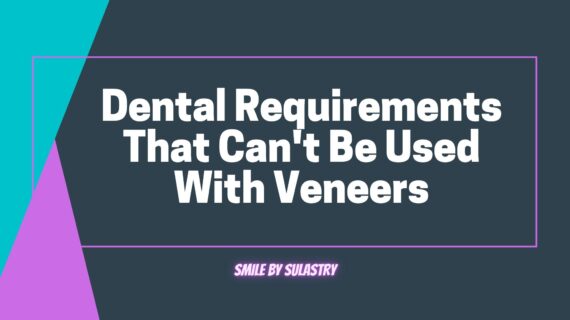Introduction
Imagine walking into a dental clinic with stained, crooked, or missing teeth—and walking out the same day with a Hollywood-worthy smile. Thanks to modern cosmetic dentistry, a one-day dental makeover can completely revamp your teeth in just one appointment.
But how does it work? What procedures are included? And is it right for you?
In this , we’ll cover:
✔ What a one-day dental makeover includes
✔ Top procedures available (veneers, implants, whitening)
✔ Who is the ideal candidate?
✔ Cost vs. traditional treatments
✔ Pros, cons, and maintenance tips
What Is a One-Day Dental Makeover?
A one-day dental makeover (also called “smile in a day”) combines advanced cosmetic procedures to deliver a complete smile transformation in just one visit.
Common Procedures Included:
✨ Porcelain Veneers (Prep-Free Options) – Cover stains, gaps, and chips.
✨ Same-Day Crowns (CEREC Technology) – Repair damaged teeth in hours.
✨ Teeth Whitening (In-Office Zoom!) – Brighten teeth up to 8 shades.
✨ Dental Implants (All-on-4/6) – Replace missing teeth immediately.
Before & After Example:
-
Before: Stained, uneven teeth with gaps.
-
After: Bright, symmetrical, natural-looking smile.
-
Timeframe: 6-8 hours in one visit.
Top 4 One-Day Makeover Procedures
**1. Same-Day Veneers (Minimal Prep)
-
Best for: Fixing chips, stains, or slight misalignment.
-
How it works:
-
Digital scans create custom veneers in-house.
-
Bonded the same day (no lab wait).
-
-
Cost: $800-$2,500 per tooth (vs. $1,500+ for traditional veneers).
**2. CEREC Same-Day Crowns
-
Best for: Cracked, decayed, or worn-down teeth.
-
How it works:
-
3D imaging + milling machine crafts crowns on-site.
-
Placed in under 2 hours.
-
-
Cost: $1,000-$2,500 per crown.
**3. In-Office Teeth Whitening (Zoom!)
-
Best for: Instant brightness (up to 8 shades whiter).
-
How it works:
-
Strong bleaching gel + LED light accelerates whitening.
-
Takes 45-60 minutes.
-
-
Cost: $400-$800.
**4. All-on-4 Implants (Same-Day Teeth)
-
Best for: Missing most or all teeth.
-
How it works:
-
4-6 implants support a full-arch prosthesis.
-
Walk out with new teeth the same day.
-
-
Cost: $15,000-$30,000 per arch.
Who Is the Ideal Candidate?
✅ Healthy gums (no untreated periodontal disease).
✅ Good bone density (for implants).
✅ Realistic expectations (not for severe misalignment).
Not Ideal For:
❌ Severe gum disease (needs treatment first).
❌ Major jaw misalignment (braces/Invisalign first).
Pros & Cons of a One-Day Makeover
✅ Advantages
✔ Instant results (no waiting weeks for lab work).
✔ Less invasive (some options require no tooth shaving).
✔ Minimal downtime (eat normally the same day).
❌ Disadvantages
✖ Higher upfront cost than phased treatments.
✖ Not all dentists offer same-day services.
✖ Limited customization compared to lab-made veneers/crowns.
Cost Comparison: One-Day vs. Traditional
| Procedure | One-Day Cost | Traditional Cost | Time Saved |
|---|---|---|---|
| Veneers | $800-$2,500/tooth | $1,500-$3,000/tooth | 2-3 weeks |
| Crowns | $1,000-$2,500 | $800-$3,000 | 2 weeks |
| Whitening | $400-$800 | $100-$500 (kits) | 1-2 weeks |
| Implants | $15K-$30K/arch | $20K-$50K/arch | 3-6 months |
Financing Options:
-
Dental savings plans (DentalPlans.com)
How to Prepare for Your Makeover
-
Consultation: 3D scan + smile preview.
-
Oral Health Check: Treat cavities/gum issues first.
-
Pre-Procedure Care: Avoid smoking/alcohol 24hr prior.
Aftercare & Maintenance
✔ Avoid hard/sticky foods (for 24-48hrs).
✔ Use non-abrasive toothpaste (for veneers/crowns).
✔ Nightguard if you grind teeth.
✔ Regular dental checkups (every 6 months).
Conclusion: Is a One-Day Makeover Right for You?
If you want a red-carpet smile without the wait, a one-day dental makeover can deliver stunning, lasting results. While it’s more expensive than phased treatments, the instant transformation is unbeatable.
Ready to explore your options?
Find a same-day dentist near you or download our “Makeover Checklist”.
For more artikel :
- https://www.medicaltourismco.com/smile-makeover-in-bali/
- https://www.smilestudiodentists.co.uk/smile-makeover-packages
- https://www.forbes.com/sites/forbes-personal-shopper/article/best-teeth-whitening-kit/
- https://www.independent.co.uk/extras/indybest/fashion-beauty/beauty/best-teeth-whitening-gels-powders-strips-b2311665.html
- https://www.smilespecialties.com/all-on-4–teeth-in-a-day.html
- https://columbinecreekdentistry.com/advantages-and-disadvantages-of-same-day-dentistry-littleton/
Booking / contact us : 087885490866 (wa)
Email : smilebysulastry.id.@gmail.com


